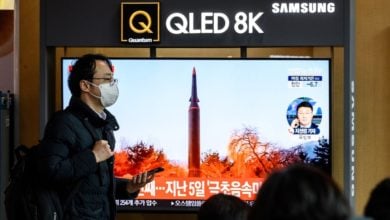A Realistic Plan for Peace for Ukraine and Russia

The tragic conflict in Ukraine has made it necessary to look at a potential peace plan.
The specifics will need to be agreed upon by Russia and Ukraine. It is difficult at this stage to predict what each side would accept. However, this conflict involves all of us in some way and stems partly from disagreements about whether Ukraine should ever join NATO. The U.S. holds a significant stake in the matter, so the Biden Administration must play an important role in helping both sides to come up with a compromise.
An agreement would require Ukraine to give up its desire to be a NATO member. It also requires that NATO’s governments and Ukraine formalize this commitment. Russia must agree to ceasefire and withdrawal from Ukrainian territories. The agreement would be signed by all parties to support and uphold the safety of neutral Ukraine. NATO and the European Union would communicate the clear message that Russia could attack again and all sanctions on Russia would be lifted.
These are just some of the ideas that might help.
Territory. It is tolerable, and probably inevitable, that Russia will insist on holding onto the Crimean peninsula, given Crimea’s role in Russian history and its importance for the Russian Navy. The West is not required to recognise this annexation that occurred in 2014. If Ukraine wishes to maintain the matter alive with Moscow in the future, it should, possibly, offer various forms of dual citizenship and guarantee access within its choice real property. By contrast, the Donbas regions of eastern Ukraine should be returned to Ukraine, given the naked and violent Russian aggression that has since 2014 victimized this region—though if Ukrainian President Volodymyr Zelensky were willing to modify borders in that region, we should not oppose the idea.
U.N. peacekeepers.A U.N. surveillance mission with troops from other regions than Russia or NATO could be sent to monitor the future border. This would reduce the chance of any renewed fighting. The Organization for Security and Cooperation in Europe (OSCE) should also send monitors.
U.N. presence.Today most U.N. agency are located in New York City, Italy and Switzerland. They are neutral and would continue to exist in the future. Thus, it would be natural that some technical U.N. agencies (not security organizations per se) be moved to Ukraine in a demonstration of the confidence and commitment of the international community to Ukraine’s sovereignty and as a symbolic recognition of its enduring neutrality.
Rebuilding UkraineAfter the conflict, Ukraine will require assistance from the international community. Even if this seems impossible, Russia ought to make some contribution as a member of the U.N. and Organization for Security and Cooperation in Europe. However, its financial contributions should not be construed in terms of reparations as that would render the idea unworkable for Moscow. Russia shouldn’t be eligible to receive financial assistance.
Ukraine’s future military and political system.Russians insist on demilitarized Ukraine and the end to the Zelensky regime as part of any agreement. The latter demand would be an unconscionable infringement on Ukraine’s sovereignty. It is unacceptable that the former demand be made. Putin would have the possibility of resuming war in the future. Russia cannot consider Ukraine to be a threat due to its size. Putin is well aware of this fact, and any Russian offer to demilitarize Ukraine shows bad faith. That said, Ukraine’s future military forces should resemble those of Finland or Switzerland or Sweden—with a modest active-duty force and a large reserve capability, primarily of infantry, that can resist any attack or attempt at occupation. This is not too different from Ukraine’s current defense posture, so the goal should be to avoid new constraints, not change the basic situation dramatically.
Assistance to the military The U.S. can and should commit as part of any deal to limit our own military aid to Ukraine to the scale and character that preceded the war—several hundred million dollars a year on average—rather than to the much greater flow that we have been providing in recent weeks since the conflict began.
Finland and Sweden These two countries have long been proud of their neutrality, but Putin’s behavior has made them reconsider fundamentally whether they wish to join NATO, and a majority in each country now support the idea. Putin must accept that possibility; it is not his right to deny it, Finland and Sweden’s choice even as they continue to mull whether such membership would in fact be a good idea.
Sanctions.Although most of the sanctions that were imposed on Russia recently would be lifted and some will be eased, Putin must accept that not all western companies will choose to go back to Russia in years to come. Western governments can’t force them to do so. He will need to accept this as a natural result of his military aggression. This is still a better option than any economic suffering that could result from the ongoing war. Russia can resume energy trading and access to international financial systems with a signed deal.
Perhaps China and the U.S., often at each other’s throats on the Ukraine issue and many others these days, can even collaborate on how to pursue and support this kind of peace process. President Xi Jinping may be best able to persuade Putin of the logic of this kind of approach—a framework that is ideal for no one, but the “least bad” of the realistic paths forward for most.
It is too late to save time before the already horribly tragic conflict becomes completely catastrophic.
Here are more must-read stories from TIME





